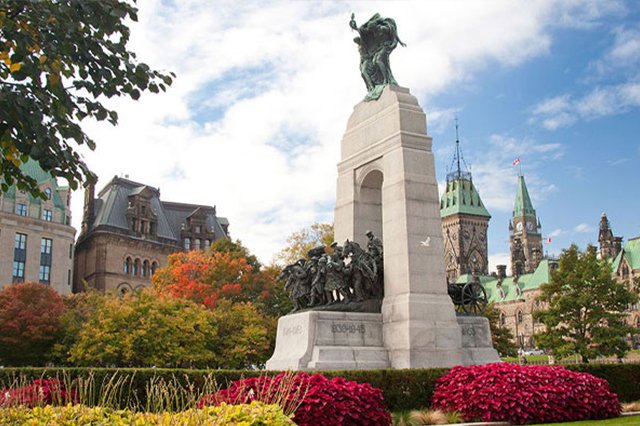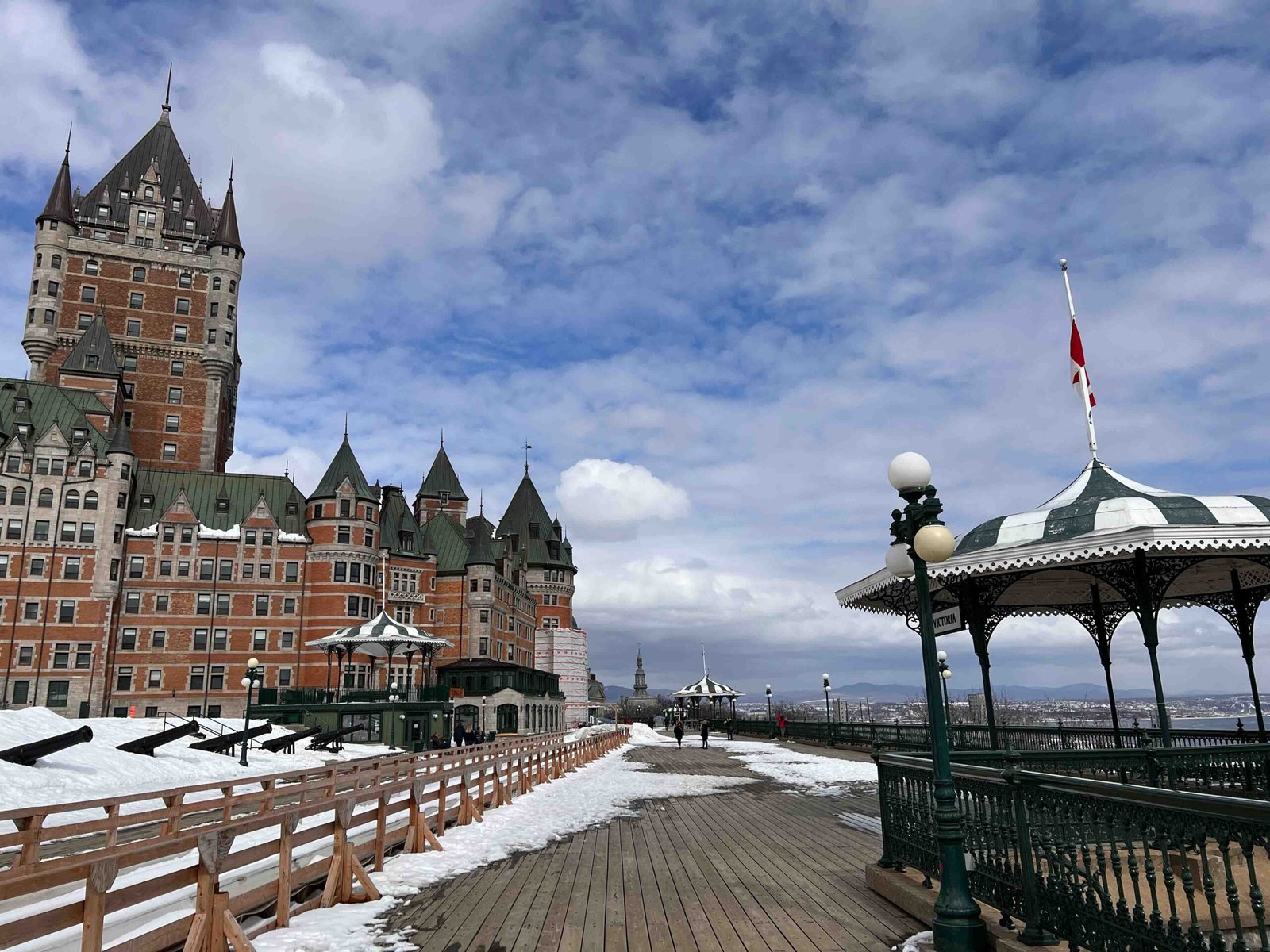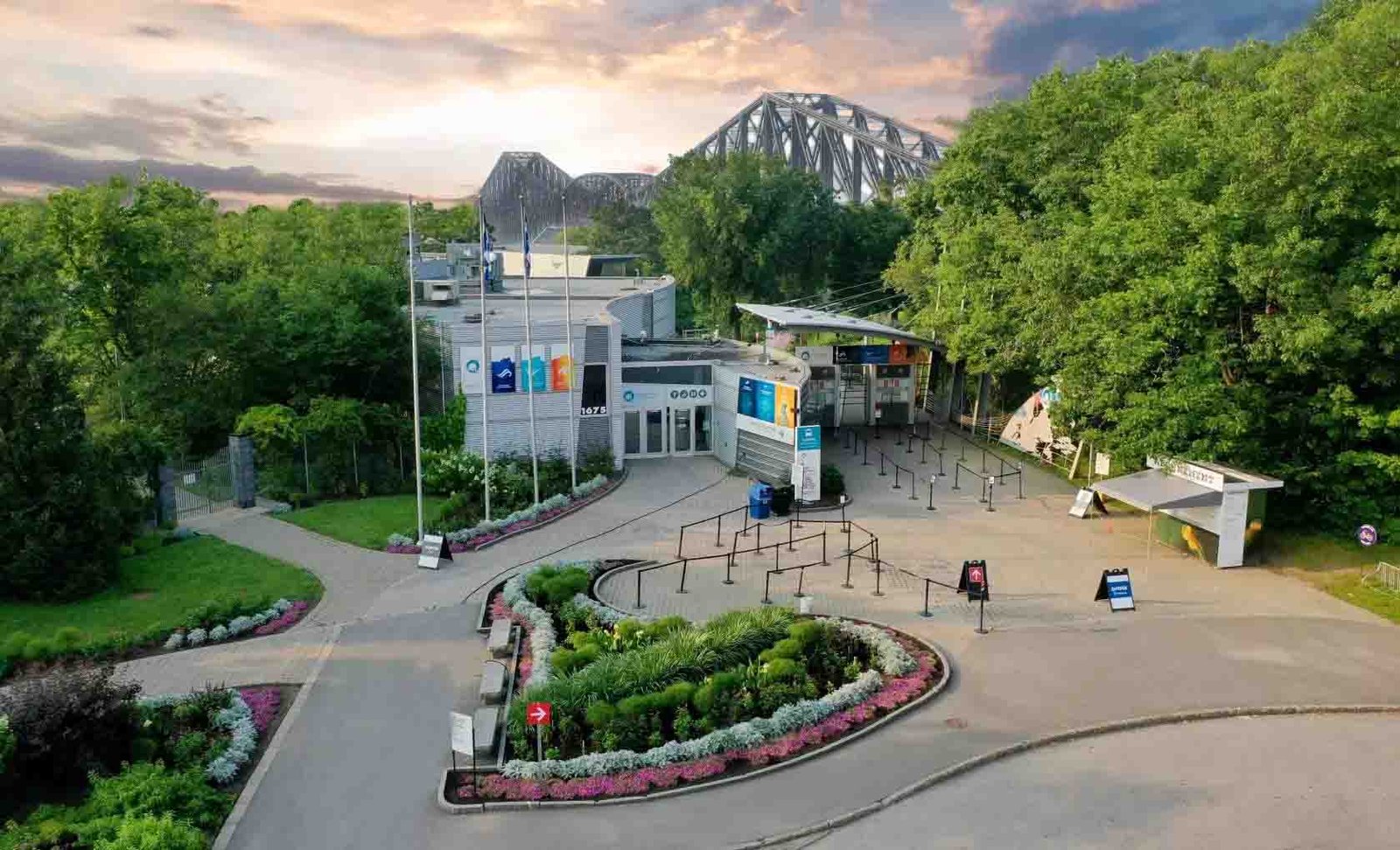A Visitor’s Guide to the National War Memorial: History, Symbolism, and Ceremonies
The National War Memorial, located in Confederation Square in Ottawa, is one of Canada’s most important monuments, standing as a tribute to those who have served and sacrificed in conflicts around the world. Known as the Response, this towering monument commemorates Canada’s military history, including both world wars, the Korean War, the South African War, the War in Afghanistan, and peacekeeping missions. As a symbol of national remembrance and unity, the National War Memorial is a focal point for ceremonies of reflection and remembrance, including Remembrance Day on November 11.
A Monument of National Significance
Unveiled in 1939 by King George VI, the National War Memorial was initially dedicated to the soldiers of World War I. However, in later years, its significance was broadened to honor those who served in World War II and other conflicts, including Korea, Afghanistan, and peacekeeping missions. In 2000, the Tomb of the Unknown Soldier was added to the memorial, providing a place for Canadians to honor the unknown men and women who died in military service.
The National War Memorial stands at the heart of Ottawa’s downtown, just steps away from Parliament Hill. The monument is a powerful symbol of Canada’s commitment to peace, freedom, and democracy, and it is visited by thousands of people every year.
Symbolism of the National War Memorial
The design of the National War Memorial reflects Canada’s military history and its enduring values. Key features include:
- The Arch and Figures:
- The monument is dominated by a granite arch that symbolizes the passage from war to peace. Beneath the arch, there are 22 bronze figures representing the various branches of the Canadian military, including soldiers, sailors, airmen, and nurses. The figures are shown marching together, signifying the united effort of Canadians during times of conflict.
- At the top of the arch, two allegorical figures, Peace and Freedom, hold a wreath symbolizing the victory of peace over war.
- The Tomb of the Unknown Soldier:
- In 2000, the Tomb of the Unknown Soldier was placed at the foot of the National War Memorial. The remains of an unidentified Canadian soldier who died during World War I were brought back from Vimy Ridge in France and interred in the tomb. The tomb serves as a powerful reminder of the many soldiers whose identities remain unknown, and it represents all Canadians who have died in military service.
- Visitors often leave poppies on the tomb during Remembrance Day and other occasions to honor Canada’s fallen soldiers.
- Engravings:
- The monument is inscribed with the years of major conflicts in which Canada has participated. The original inscription commemorated World War I and World War II, but it has since been updated to include later conflicts, including the Korean War, the South African War, and Afghanistan. The engravings serve as a reminder of Canada’s long-standing role in global peacekeeping and military efforts.
Ceremonies at the National War Memorial
- Remembrance Day Ceremony:
- The Remembrance Day ceremony, held annually on November 11, is one of the most significant events at the National War Memorial. It is attended by veterans, military personnel, government officials, and thousands of citizens who gather to honor those who served and sacrificed for Canada.
- The ceremony includes a moment of silence at 11:00 a.m., wreath-laying, and military parades, as well as the sounding of the Last Post and the recitation of In Flanders Fields. The event is broadcast across the country and is a powerful expression of national unity and remembrance.
- Changing of the Guard:
- During the summer months, a ceremonial Changing of the Guard takes place at the National War Memorial. Members of the Canadian Armed Forces stand watch over the Tomb of the Unknown Soldier, ensuring that the memorial is treated with the respect and dignity it deserves. The Changing of the Guard is a solemn and symbolic act that highlights Canada’s commitment to honoring its military heritage.
- Wreath-Laying Ceremonies:
- Throughout the year, wreath-laying ceremonies are held at the National War Memorial to mark important military anniversaries and state visits. Foreign dignitaries, military officials, and heads of state often lay wreaths at the memorial as a gesture of respect and solidarity with Canada.
Visiting the National War Memorial
The National War Memorial is open to the public year-round, and visitors are welcome to reflect on its significance at any time. The site is centrally located in downtown Ottawa, making it easily accessible to both tourists and residents.
- Location: Confederation Square, Ottawa, ON K1P 5J6
- Nearby Landmarks: The memorial is just a short walk from Parliament Hill, the National Arts Centre, and Major’s Hill Park.
How to Get There
The National War Memorial is centrally located in Confederation Square, making it easily accessible by public transportation, car, or on foot.
- Public Transport: The memorial is easily reached by OC Transpo buses and the Parliament LRT Station, which is just a short walk away.
- Parking: There are several public parking lots nearby, though many visitors choose to walk or take public transport due to the memorial’s proximity to other major attractions.
Best Time to Visit
The National War Memorial is a peaceful place to visit at any time of year, but it is particularly moving to visit on Remembrance Day (November 11) when thousands of people gather to honor Canada’s veterans and fallen soldiers.
- Summer Months: The Changing of the Guard ceremonies during the summer months offer an additional layer of tradition and symbolism to a visit to the memorial.
- Winter: In winter, the snow-covered memorial takes on a serene and solemn atmosphere, offering a quiet space for reflection.
A Place of Reflection and Remembrance
The National War Memorial stands as a powerful symbol of Canada’s military history, honoring those who have fought and died in service to their country. Its towering presence in the heart of Ottawa reminds visitors of the sacrifices made in the pursuit of peace and freedom. Whether attending a public ceremony or taking a moment to reflect in solitude, a visit to the National War Memorial is a deeply moving experience that connects Canadians to their past and reinforces their commitment to a peaceful future.






Leave a Reply